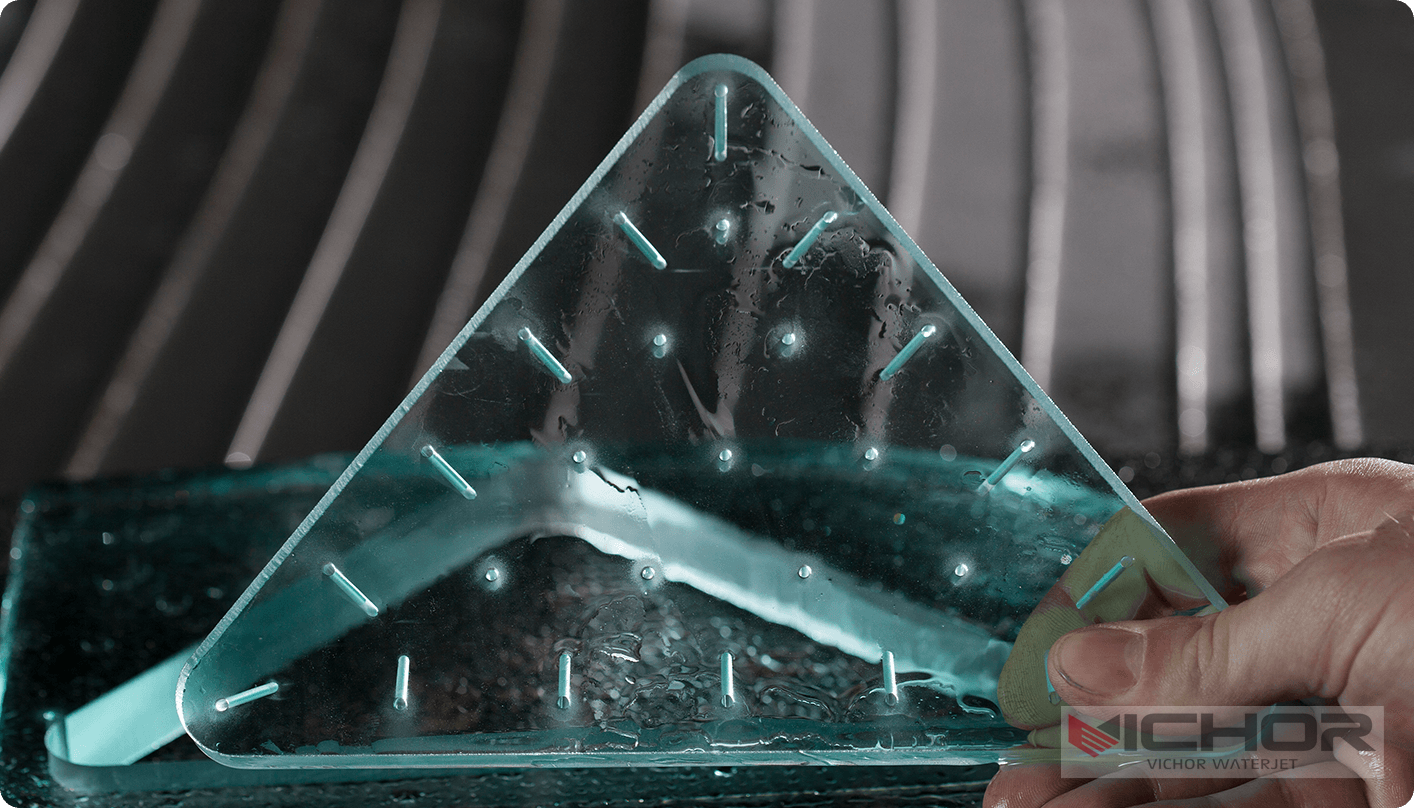
Profile Waterjet Cutting: How It Works and Why It Might Be Your Best Option
In the world of manufacturing and fabrication, precision is paramount. The ability to cut complex shapes from a vast array of materials without compromising their inherent properties is a constant pursuit. Among the many technologies available, one stands out for its remarkable versatility and cold-cutting capability: profile waterjet cutting. This process has revolutionized how industries approach shaping materials, from the most delicate stones to the toughest metals. But what exactly is it, how does it function, and what are its real-world advantages and challenges? This article delves deep into the mechanics, benefits, applications, and common questions surrounding this powerful technology.
The Core Principle: Harnessing the Power of Water and Abrasive
At its most fundamental level, profile waterjet cutting is a subtractive manufacturing process that uses a highly pressurized stream of water, often mixed with an abrasive garnet sand, to cut through materials. Think of it as an ultra-high-pressure version of a garden hose, but one capable of slicing through titanium.
The process begins with a high-pressure pump, which pressurizes water to extreme levels, typically between 60,000 and 90,000 Pounds per Square Inch (PSI). This pressurized water is then forced through a small diamond or sapphire orifice, creating a supersonic stream thinner than a human hair. For cutting hard materials like metals or stone, an abrasive material (typically garnet) is introduced into this stream right after the orifice, in a mixing tube. The abrasive particles are accelerated by the water jet, creating a powerful erosive stream that grinds through the material with incredible precision. For softer materials like foam or rubber, pure waterjet cutting (without abrasive) is often sufficient.
The Unmatched Advantages of Profile Waterjet Cutting
Why has profile waterjet cutting become such a popular choice across diverse industries? The answer lies in its unique set of advantages that are difficult to replicate with other cutting methods like laser, plasma, or machining.
No Heat-Affected Zone (HAZ): This is arguably its greatest benefit. Unlike thermal cutting processes, waterjet cutting is a cold process. It does not generate heat that can alter the material’s metallurgical structure, create hardening, or induce thermal stress. This is critical for materials that are sensitive to heat, such as certain tool steels, titanium, and aluminum.
Material Versatility: A profile waterjet cutting system can handle an astonishingly wide range of materials. One day it might be cutting 6-inch-thick titanium aerospace components, and the next, it could be precisely shaping delicate chocolate, foam insulation, or brittle glass. This “one-tool-fits-all” capability is a massive advantage for job shops and manufacturers working with diverse projects.
High Precision and Flexibility: Modern CNC-controlled waterjet systems offer exceptional accuracy, capable of holding tolerances within a few thousandths of an inch. They can produce incredibly complex profiles, sharp corners, and intricate details that would be challenging or impossible with other methods. Changing a design is as simple as uploading a new CAD file.
Minimal Material Waste: The narrow kerf (the width of the cut) of a waterjet stream, especially compared to saws or routers, means less material is wasted. Furthermore, because parts can be nested closely together on a single sheet, material utilization is maximized, leading to significant cost savings, particularly with expensive materials.
Environmentally Friendly: The process produces no hazardous fumes or gases. The primary waste products are water and used abrasive garnet, which is a non-toxic, natural material that can often be recycled or disposed of safely.
Where Is It Used? Applications of Waterjet Cutting
The application of profile waterjet cutting is virtually limitless, spanning dozens of industries. Some of the most prominent include:
Aerospace: For cutting heat-sensitive components like titanium, aluminum, and composites used in airframes and engines.
Architecture and Art: Creating intricate designs in stone, marble, glass, and metal for decorative panels, signage, and sculptures.
Automotive: Prototyping parts, cutting gaskets, interior components (like carpets and foam), and even trimming composite body panels.
Manufacturing: General fabrication of machine parts, tools, and components from plastics, rubbers, and metals where preserving material integrity is key.
Food Industry: In a specialized pure-water form, it is used for cutting cakes, frozen foods, pizza, and poultry, offering hygienic and precise portioning without crumbs or bruising.
Material Considerations: What Can You Cut?
The list of materials compatible with profile waterjet cutting is extensive. It effectively cuts through:
Metals: Steel, stainless steel, aluminum, brass, copper, titanium, tool steel, and inconel.
Stone & Tile: Granite, marble, slate, ceramic, and porcelain tile.
Glass: Both plate glass and tempered glass (with care to avoid initiating a fracture).
Composites: Carbon fiber, fiberglass, and Kevlar, without fraying or delaminating the edges.
Plastics & Polymers: Acrylic, polycarbonate, ABS, rubber, foam, and textiles.
Essentially, if a material can be eroded, a waterjet can likely cut it.
Navigating Common Questions and Challenges
While incredibly powerful, profile waterjet cutting is not without its considerations. Understanding these common questions and potential issues is crucial for anyone considering this technology.
1. What is the Taper in Waterjet Cutting and How is it Managed?
A common characteristic of abrasive waterjet cutting is that the cut is not perfectly perpendicular. The top of the cut is slightly wider than the bottom, creating a V-shaped taper. This occurs because the stream loses energy and widens slightly as it travels through the material. For many applications, this minimal taper is acceptable. However, for high-precision parts, it can be compensated for using advanced CNC controls that tilt the cutting head (dynamic head tilt or DHT) or through software algorithms that adjust the cutting path.
2. How Does Cutting Speed Compare to Other Methods?
Profile waterjet cutting is accurate and versatile but is generally not the fastest cutting method available. Thick metals cut slower than with plasma, and thin metals cut slower than with laser. However, its speed must be weighed against its unique advantages—no HAZ and material versatility. For many jobs, it is the only option, making speed a secondary concern.
3. Is the Process Noisy and Messy?
Yes, waterjet cutting can be a loud process, and it involves a lot of water splashback. Modern systems are almost always enclosed in a watertight tank to contain the mess and significantly reduce noise levels to within safe operating limits for factory environments.
4. What About Operating and Maintenance Costs?
The initial investment can be significant. Beyond that, ongoing costs include electricity for the high-pressure pump, abrasive garnet (a consumable), replacement orifice jewels, and mixing tubes. Regular maintenance on the high-pressure components is essential to prevent downtime and ensure consistent cut quality. While the per-hour operating cost can be higher than some alternatives, the ability to cut almost any material often results in a lower total cost per finished part by eliminating secondary processing.
5. Can It Achieve a Smooth Edge Finish?
The edge finish from a standard profile waterjet cutting operation has a matte, satin-like texture, often described as a “strawberry” finish due to the abrasive action. For applications requiring a smoother finish, techniques like “low-pressure cutting” or “multi-pass cutting” can be employed. However, often the edge is acceptable as-is, or it can be finished with a light sanding or polishing if required.
In conclusion, profile waterjet cutting is a uniquely flexible and powerful manufacturing technology. Its ability to cold-cut virtually any material with high precision makes it an indispensable tool in modern fabrication. While considerations like taper, speed, and operating costs exist, its unparalleled advantages often make it the best, and sometimes the only, choice for creating complex profiles without compromising the integrity of the base material. Whether you’re an engineer, artist, or manufacturer, understanding this process opens up a world of possibilities for your projects.
continue reading



